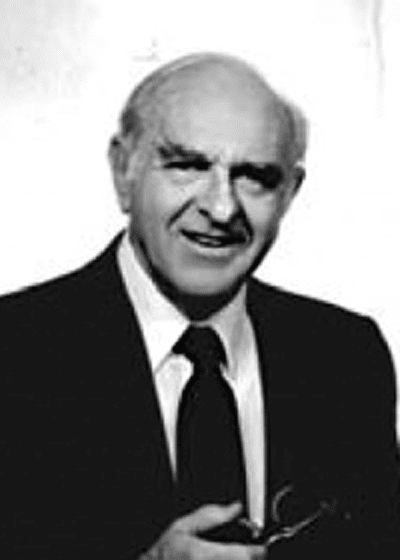Leadership is one of the most sought-after qualities in a professional of the oil field, some of them have this innate ability, but for many others a training process is necessary to be able to manage a group of specialists in different skills.
Nowadays, the time frame for a recent engineering graduate to take control of technical activities or entire groups is decreasing. The constant advances of the industry absorb the most experienced personnel of the field, commonly leaders, to sites of greater scientific use, such as deposits’ management or integrated studies; leaving positions of greater responsibility in abandonment. At this point in history, rapid training of “new” personnel is needed to take on more important responsibilities.
The world of oil and gas has different tasks, such as exploration, drilling, production or field management. In any of these cases, the figure of the leader is present. And despite the fact that it is a team work performed by different professionals in various disciplines, the final decision is made by the person in charge: the leader.
But given the subtraction or lack of experienced personnel today and the short time new professionals have to adapt to these responsibilities, the following question arises: “How young students entering the field can gain leadership skills?”
In order to develop this aptitude, it is fundamental to know what a leader is and which qualities he must possess:
- A leader must have the ability to set goals and expectations. It is essential for teams to work together towards a common goal.
- You must know when and how to invest in people. Human talent is the most important and valuable factor of any organization. Therefore, if you want qualified people, you must invest in their training and education.
- The leader must have the ability to enhance the talent. It is important to create career plans for each of the people who work for the company and, at the same time, it is a form of motivation.
- Communication and active listening are keys for effective leadership.
- The enthusiasm and the spirit of overcoming difficulties are essential values in any leader who seeks to be a person of reference within his team.
- Preach by example. Albert Einstein said: “The example is not the best way to teach, it is the only one.” This phrase makes special sense when talking about the relationship between a leader and his team.
- A leader must have the ability to respect the opinion of those who surround him and, where necessary, have the firmness to make his decision noticed.

With the knowledge of this description, it can be deciphered that a leader is an absolute indispensable figure for the effective functioning of an activity. He is responsible for magnificent efforts in a pleasant and motivating way for the professionals in the oil and gas field, making the most of them and encouraging them to continue doing a good job in time.
For this reason, a leader is the guide of a group of people during the performance of an activity. He must have the ability to get each of the people on the team to work together and dedicate their efforts in unison.
Understanding the leader as a fundamental figure, a preparation process for the formation of this person becomes crucial.
Although there is no step-by-step guide to creating a leader, there are three main theories of leadership, and if we apply reengineering to them, they could help a person become an effective leader:
- Path-Goal Theory
- Contingency Theory
- Transformational-Transactional Theory
Path-Goal Theory
The Path-Goal Theory, created by Robert House in 1971, indicates that the best way to achieve a commitment and the full motivation of employees towards the company is that the leader rewards the worker when he achieves a goal. It is the responsibility of the leader to measure the degree of the reward adjusting it to the degree of achievement the team member possesses.

According to House, the key to this method is focused on the complete knowledge that the leader has of the goals that are to be achieved, so that he can perform better the activities that are to be carried out and bring the message more clearly to the worker. Knowing the goals and tasks, the leader can deduce the size of the reward to be obtained by the person performing the activity, in this case the worker.
Applying reengineering to this principle, we get that the team must be kept focused on the goals that in turn, with the reach of each one of them, will show the path to the goal.
Directing this theory to the leader and not to the team, it is established that the leader must know in concrete terms the direction and objectives that the company wishes to achieve. Then, to use the theory about the leader, it would be necessary to assign short activities with precise delivery times, to test the quality of the decision-making and the knowledge that is acquired about the processes. In this way, you can calculate what kind of incentive you can set for the team.
This is the best way for students to get to know the processes and tasks to achieve goals when doing team work, all from the different courses or subjects they can take.
In the case of the oil industry, this kind of recognition is very much seen in the reward for optimally managing the execution times, since time is money (and even more so in this industry). If the leader knows the task to be accomplished, he assigns it to his work team and it is accomplished in good time, it would be primarily due to a correct approach of tasks and strategies to achieve the goal.
Contingency Theory
The contingency theory, developed by Fiedler and associates in 1950, explains that there is no generic way to manage an organization, since each case is unique and proposals can change depending on internal or external situations. In this way, the commitment assumed by a leader in managing a company is directly related to these contingent variables, to which the organization can relate.

By using reengineering to analyze the second theory of leadership, it results that there is no written manual for all the contingencies that could present, this applies fundamentally to the oil field, as it works with a natural resource and situations do not always follow the same pattern.
At the academic level, this law is often constantly applied by teachers who make students face different challenges while progressing in their careers.
The best way to apply this law as a method of preparation for a future leader who is already in the field is to avoid the comfort zone, prompting this person to face challenges that are outside his main area of expertise. In this way, when facing a contingency, the leader will have more than one idea to solve the problem, and will have knowledge of different tools that he can count on.
Transformational/Transactional Theory
Transactional leadership is based on meeting goals and expected performance, rewarding if the goals are achieved and punishing or reprimand if not. It is called “transactional” because the “transaction” would be what the organization pays the team members in exchange for their effort and compliance. The basis of transactional leadership is a transaction or process of exchange between leaders and their followers.

The transactional leader recognizes the needs and desires of his team and then explains clearly how they will be able to meet those needs and aspirations in exchange for fulfilling the specified objectives and performing certain tasks.
Transformational leadership is defined as the set of capacities that allow the leader to recognize the need for change, design the direction for change and execute it effectively.
A leader can transform the members of his group through the following actions:
- Making his team feel confidence, admiration and loyalty toward the leader.
- Making them aware of the importance and value of the tasks’ results.
- Prompting them to transcend their own interests in the best interests of the organization or the team.
- Activating their higher needs.

This latter theory, broken down and directed towards the leader to be trained, either as a student or a new graduate entering the oil field, ensures that the prospect needs to learn when to apply a transaction or a transformation, with the personnel of the work team. Not all people in a group work the same way, so it is of the utmost importance for a student to learn about the different types of workers and work.
Therefore, the ability to identify which of the two modalities of this law can be used to motivate the member of the team can be perfected by the student or professional in the field with the use of fraternity. In this way, you can know first-hand the person you are working with, know what their needs and aspirations are. Thus, it will be known how they can be addressed so that they can become a member of the teams and motivate them effectively.
Finally, it is important to understand that there is no way to form a leader in a perfect way. It is a process that requires time and dedication. In some cases, skills are needed; the person must possess them intrinsically or learn them over time. But there is no doubt about one thing: the best way to teach is by example (Albert Einstein) and to have good leaders in the future, good leaders are needed in the present.
Raul Palencia is an engineer and researcher with more than 10 years of experience as a geologist. He graduated from the prestigious University of Andes (ULA), later he received a master’s degree in reservoir engineering at the Venezuela Hydrocarbons University. During his career development, he worked for oil companies in positions such as: field geologist, reservoir engineer and reservoir simulation. He has worked in Argentina, Ecuador, Mexico and Venezuela. He currently resides in Texas.













